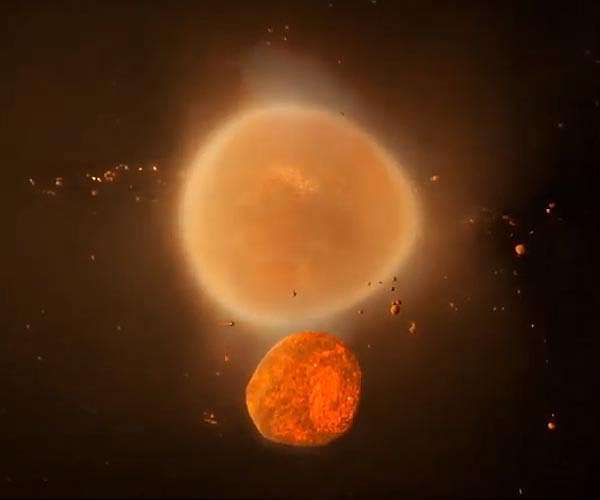30.01.2024

The introduction of this novel lunar time scale scheme, comprising three Eons and six Periods, provides a systematic framework to describe the evolutionary history of the Moon. (stock image only)
In a significant development in lunar science, a team of renowned scientists, including Dr. Dijun Guo from the National Space Science Center, Chinese Academy of Sciences, Dr. Jianhzong Liu from the Institute of Geochemistry, Chinese Academy of Sciences, and Dr. James W Head from Brown University, have proposed an updated time scale for the Earth's Moon. This new scheme, a result of comprehensive research, aims to provide a more integrated understanding of the Moon's geological evolution, especially in light of advancements post-Apollo era.
The updated time scale divides the Moon's history into three primary eons, each representing distinct phases of lunar evolution characterized by the interplay of endogenic and exogenic processes. The Eolunarian Eon, dating from 4.52 to 4.31 billion years ago, marks the period of the Moon's magma ocean formation, its differentiation, and the solidification of the primary crust. This eon was predominantly shaped by endogenic forces.
Following this, the Paleolunarian Eon stretched from 4.31 to 3.16 billion years ago. This era witnessed a balance between endogenic processes, such as volcanic activities, and exogenic ones, like significant impact events. It represents a phase where internal and external forces significantly shaped the lunar surface.
The most recent, the Neolunarian Eon, beginning 3.16 billion years ago and extending to the present, is characterized by a dominance of exogenic processes. This era saw a reduction in volcanic activities, with impact events playing a more significant role in altering the lunar landscape.
A key element of this new proposal is the identification of the ejecta stratum of the South Pole-Aitken Basin, named the "Das Formation." This formation is pivotal as it signifies the oldest stratum resulting from exogenic processes within the lunar crust, serving as a boundary between the Eolunarian and Paleolunarian Eons. It also leads to a further division of the previously defined Pre-Nectarian Period into two distinct periods: the early Magma-oceanian Period and the later Aitkenian Period.
The introduction of this novel lunar time scale scheme, comprising three Eons and six Periods, provides a systematic framework to describe the evolutionary history of the Moon. It underscores the importance of understanding both internal and external processes in shaping lunar geology. This approach not only enhances our comprehension of the Moon's past but also offers a model for studying the geological evolution of other terrestrial planets.
Moreover, this scheme has been utilized in the 1:2.5 million-scale lunar global geologic map compiled by the same research group, demonstrating its practical application in lunar studies. This updated time scale is a testament to the ongoing advancements in lunar research, offering fresh perspectives and deeper insights into the Moon's dynamic geological history.
Quelle: SD
